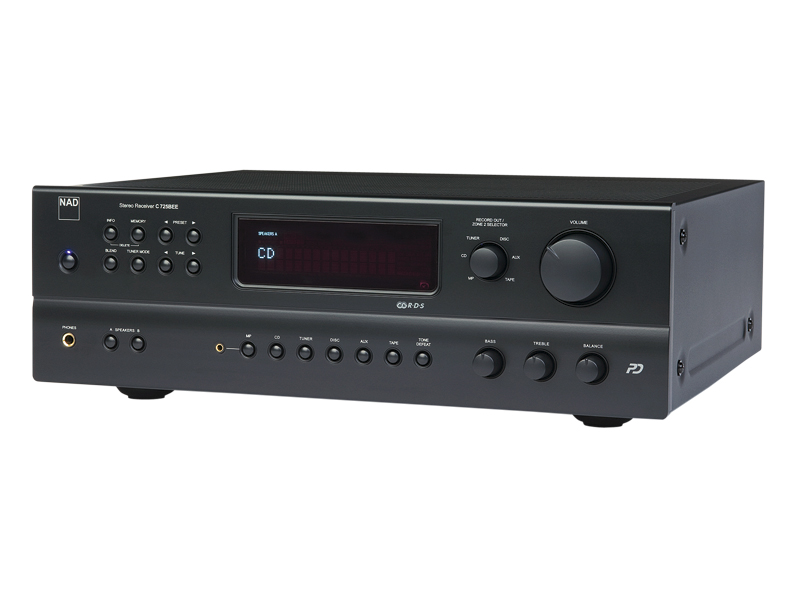TechRadar Verdict
This receiver's very good FM tuner section is a delightful surprise, with unusually clean and detailed sound, the amp also has decent mid detail and treble extension
Pros
- +
Excellent FM tuner
- +
Clean, detailed sound
Cons
Why you can trust TechRadar
The NAD C725BEE is a pleasingly persuasive argument for why receivers are a better idea than ever.
Like practically all contemporary amplifiers, the NAD C725 is equipped with digital control: you already have a display and enough computer power onboard to operate a tuner module.
Given that, the addition of an FM/AM tuner to an amplifier is nothing more than an all-in-one metal box – about the size of a packet of playing cards – that includes its own aerial connectors and fixes to the inside of the back panel with two screws. It's a real no-brainer – in the best possible way.
As it happens, NAD has rather more history with receivers than most respected hi-fi names. It has tended to regard them as entirely valid hi-fi components, designing them carefully to perform as such.
If one ignores that little radio module, the insides of the C725 are typical of recent NAD integrated amplifiers, with a medium-size toroidal transformer, generous power supply smoothing capacitors and a power amplifier circuit built almost entirely with discrete transistors.
Assembly is neat and mostly done with through-hole components, though there are a few small daughter-boards using surface-mount parts.
DAB radio is not a built-in feature, but there is a socket for a DAB module (about £150 extra). Similarly, you can add an iPod dock module for an additional £100, though, of course, any iPod or other portable player can simply be plugged into the relevant audio input and operated via its own controls.
Sign up for breaking news, reviews, opinion, top tech deals, and more.
Four further line inputs, plus twin recording outputs (one optionally a 'Zone 2 output'), subwoofer output and separable preamp and power amp sections complete the audio line-up at the rear.
The two sets of speakers are separately switchable. NAD rates the unit at 50 watts, but we got a comfortable 70 watts from it, with peaks more like 100 watts – and even more into low-impedance loads.
It's a well-featured beast, but not too sophisticated to appeal to the purist. Inputs are relay-switched, the volume control is a traditional single-turn potentiometer and tone controls can be bypassed.
Sound quality
Given that we have described the NAD C725 as more or less an amp that just happens to have a tuner built-in, we should say straight away that it's actually one of the best FM tuners we've heard in a while. We tuned it in (more swiftly than many current models) to several stations and were most impressed with the clean and lively sound we got from all of them.
Far too many tuners have a residual graininess to the sound that one starts to believe is intrinsic to the format: models like this prove the opposite and revive one's faith in analogue radio. It's no top Naim, Magnum Dynalab or vintage Revox, but it is damn close.
Even so, FM broadcasts don't typically provide the toughest test of amplifiers. Listening to a selection of familiar tracks from CD suggested that, as an amplifier, this one is characterised by good control and decent detail but perhaps not the utmost musical vigour.
Bass seems a shade curtailed in extension and its attack can be just a little tame too, slightly taking the edge off the rhythmic tautness of rock, jazz and anything that depends strongly on rhythm for its effect.
Midrange and treble, however, are neutral and clear and vocals are highly believable. Imaging is precise and well extended in both dimensions, while detail is also good, making this receiver a particularly great choice for the classical music lover.
It seems to have remarkably catholic tastes in speakers, too, making it a good basis for subsequent upgrading.
In short, comprising a good amp and a very good FM tuner, the NAD C725 makes for a great receiver.
Follow TechRadar Reviews on Twitter: http://twitter.com/techradarreview
